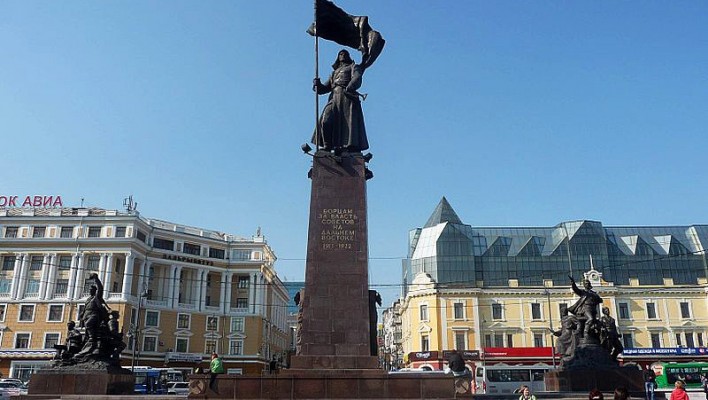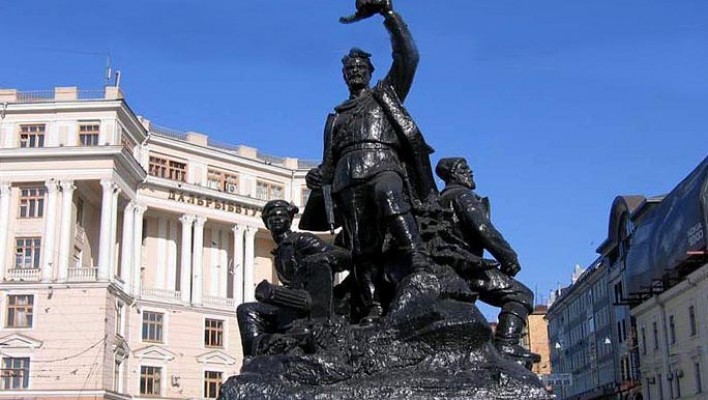Monument to the Fighters for Soviet Power
The Monument to the Fighters for Soviet Power standing on the city's central square is one of Vladivostok's most recognizable symbols. Many tourists who visit the Primorsky Krai's capital for the first time associate it primarily with this majestic and the biggest in the Far East monument. And there is no wonder in that, for the Monument to the Fighters for Soviet Power has become city's main trademark long ago.
This impressively large monument appeared in Vladivostok in 1961. Its creators wanted it to become the high dominating structure on the central square, which didn't even exist during monument's installation - there was urban garden on its place. The monument has fulfilled its mission in full: today it is not only the key element of the city's central square's architectural complex, but the most token construction in the Vladivostok's downtown.
The Monument to the Fighters for Soviet Power is a complex sculptural composition carried out in strict classical traditions. It consists of the central 30-meter high sculpture and two multi-figured groups on each side.
The sculpture of Red Army man holding flying banner in the right hand and combat trumpet, which announced the victorious revolution of 1917, in the left hand stands on the high pedestal in the center. By the way, during monument's construction the question arose: whether the sculpture should overlook the city or the Zolotoy Rog Bay. The second option seemed more logical - in this case the warrior would follow the running away enemy with his eyes, but, at the same time, he would be turned with his back to the city and the central street. Local authorities took decision in their hands and resolved to turn it to the sea.
Two multi-figured groups stand on central sculpture's both sides. The first one, or the eastern, is devoted to the overthrow of the autocracy in Russia and consists of three sculptures: revolutionary Baltic seaman, soldier and Bolshevik workman holding a rifle with banner on its bayonet. The two-headed eagle - the symbol of the defeated Russian Empire - lies at their feet. The left, or the western, sculptural group depicts partisans who liberated Vladivostok from Japanese invaders in 1922. These are the soldier who came back from the front and took a rifle in hand again, young machine gunner who rests his hand on machine gun shield, and worker who leads the partisan movement. The sculptures are made out of bronze, the podiums and pedestal - of red granite.
The Monument to the Fighters for Soviet Power is one of the most famous and popular places in town where Vladivostok locals usually make appointments.
















